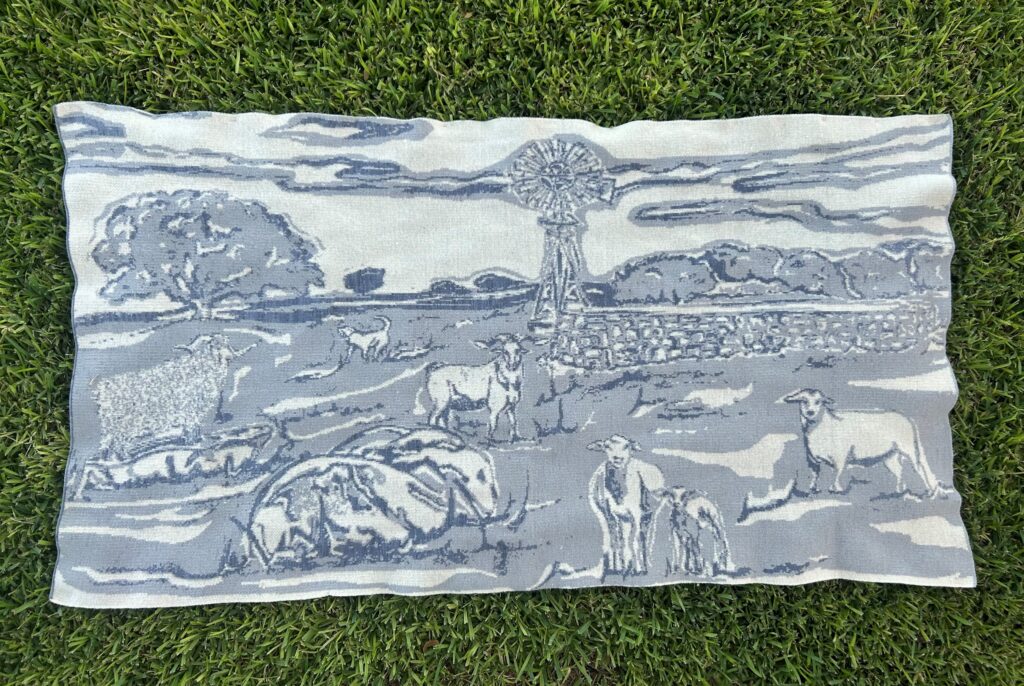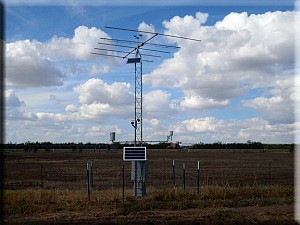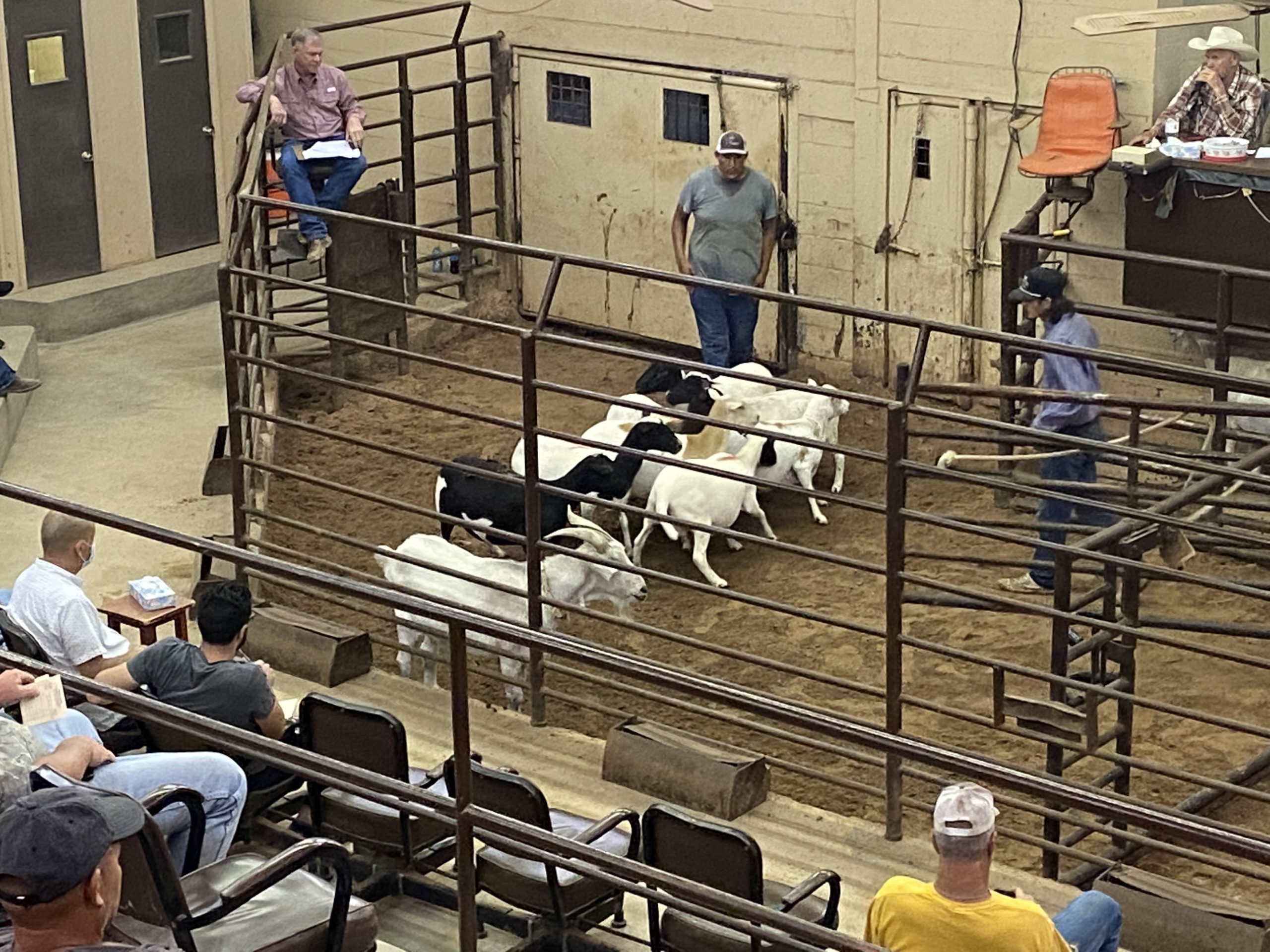Jim Barber, Calvin Trostle and Billy E. Warrick (Retired)
Research & Extension Assistant, Extension Agronomist and Extension Agronomist
Sorghum producers in the Texas Low Rolling Plains have many good sorghum hybrids to choose from. The range of planting dates, however, occurs from late April to mid July. Many producers may not readily understand the different sorghum maturity classes or when they should or shouldn’t be planted (i.e., what is a 110-day sorghum, and how may it vary?). In addition, early season cold tolerance is an attribute, which may be important particularly for early season plantings when good soil moisture is available. Likewise, tillering and its control may strongly influence the success of sorghum cropping particularly as planting date affects tillering (cool temperatures favor tillering). Hybrids that tiller have the ability to compensate upward if production conditions are favorable relative to the established plant population, but tillering hybrids also erode the ability to manage targeted plant populations and timely harvest.
These are general guidelines and are not an endorsement of any one hybrid or company by Texas AgriLife Extension Service. Suggested last planting dates for each hybrid are intended to be conservative in order to protect the producer. In northern locations of the Rolling Plains, move toward the earlier portion of the range of last planting dates for a particular hybrid. Check with the seed company representative in your area for specifics. Please report discrepancies in growth and maturity for your particular hybrid and suggested planting date to Jim Barber as well as the company representative.
Keep in mind that in terms of historical averages flowering is most harmed by hot weather even when moisture is adequate. Many producers err on the side of planting too much seed per acre. As a result in droughty conditions producers are at risk of inadequate moisture per plant during flowering and grain fill to produce grain. In managing risk, know that most grain sorghum hybrids at modest plant populations are better able to flex upward to meet the yield potential of favorable conditions. This is less risky agronomically and economically than having a high plant population crop under droughty conditions.
Managing Risk Balancing Seeding Rate vs. Available Soil Moisture: Suggested sorghum seeding rates are influenced by the available soil moisture in soils of different textures. Generally, sandy to sandy loam soil can store about 1″ of available soil water per foot; a silty loam to clay loam soil can store about 1.5″ inches per foot; and a clayey soil can store about 2″ per foot. Typically, it takes 6-8″ inches of available moisture (rainfall or in the soil) to bring a sorghum crop to the point of grain production, and each additional 1″ of water should produce 350-425 lbs. of grain.
For most dryland sorghum production in the Texas Low Rolling Plains, when soil profile moisture is adequate (>4″ of available soil moisture), a good target is 30,000-35,000 seeds/A. If soil moisture is low (2-4″), a seed drop of 25,000-30,000/A is advised. For any condition with poor soil moisture, especially as plantings approach July 1, consider 20,000 seeds/A. For limited irrigation (6-10″) with low soil profile moisture conditions, target 40,000-45,000 seeds/A, but if soil moisture is good, consider 50,000-55,000 seeds/A. For full irrigation levels, target 80,000 seeds/A on June 1, but by July consider 100,000-110,000 seeds/A for non-tillering hybrids and 80,000-90,000 seeds/A for tillering hybrids.
Because seed costs are relatively low for sorghum ($1.00-1.20 cents per pound), growers too easily increase seeding rates as it doesn’t much affect production costs. Seeding rates occasionally are altered to reflect planting conditions. In general for high quality seed under favorable conditions, expect germination 90%, and stand establishment of 80-90% for germinated seeds. If difficult germination or stand establishment is expected, seeding rates may edge back up slightly. If a rain germinates all seed and high establishment occurs, but overall growing conditions remain poor, plant population will be too high.
| In general, Texas AgriLife Extension Service suggests the following guidelines as a criteria for the last recommended planting date based on the sorghum’s maturity class: | ||
|---|---|---|
| Counties | Medium Maturity | Early Maturity |
| Borden, Scurry, Jones, Fisher, Howard,Mitchell, Nolan, Taylor, Callahan, and Counties North of the line from Schleicher to McCulloch |
June 30 | July 15 |
| These suggested dates consider the length of sorghum maturity vs. historical averages for cool fall weather, which can be expected ahead of frost. Although these sorghum maturity classes may be planted later and be successful in many years, these guidelines should help producers understand when risk increases relative to achieving grain yield potential. If you must consider a very late sorghum planting, choose among hybrids that have estimated ‘days to maturity’ of less than 90 days. Check among seed dealers for suggestions. | ||
In the accompanying table, company representatives have provided estimates of the ‘last recommended planted date’ for their hybrids. For table headings from left to right, the hybrids below for the Rolling Plains are arranged by date into four general groups for ‘last planting date.’ Hybrids with a last recommended planting date of June 10-20 are long maturity. In addition, late June hybrids are generally medium long; early July hybrids are medium; and the hybrids suggested for July 8-15 are early.
Participating Companies Recommendations
for Last Planting Dates of Selected Hybrids
(listed alphabetically)
| COMPANY: AgriPro Seeds | |||||||
|---|---|---|---|---|---|---|---|
| June 10-20 Tillering# |
June 21-30 Tillering# |
July 1-7 Tillering# |
July 8-15 Tillering# |
||||
| Hybrid | Tiller Rating |
Hybrid | Tiller Rating |
Hybrid | Tiller Rating |
Hybrid | Tiller Rating |
| 2949* Wings 9850* |
2 2 3 |
Honcho* 2731 2838 2800 2660* Cherokee* |
3 2 2 3 3 3 |
2468* 2440 9210 |
2 2 3 |
9135 2140 2233* |
2 2 2 |
| *Good early season vigor ratings, adapted to early plantings at cooler temperatures. NOTE: Tiller Rating 1 = None, 2 = Little, 3 = Moderate, 4 = High |
|||||||
| COMPANY: Asgrow (owned by Monsanto) | |||||||
|---|---|---|---|---|---|---|---|
| June 10-20 Tillering# |
June 21-30 Tillering# |
July 1-7 Tillering# |
July 8-15 Tillering# |
||||
| Hybrid | Tiller Rating |
Hybrid | Tiller Rating |
Hybrid | Tiller Rating |
Hybrid | Tiller Rating |
| A603 | 3 | A570* A571* A581 MISSILE |
2 3 3 2 |
A459* A504 |
2 3 |
A201 A298 LASER SENECA* |
3 3 3 3 |
| *Good early season vigor ratings, adapted to early plantings at cooler temperatures. NOTE: Tiller Rating 1 = None, 2 = Little, 3 = Moderate, 4 = High |
|||||||
| COMPANY: Cargill (owned by Dow AgroSciences) | |||||||
|---|---|---|---|---|---|---|---|
| June 10-20 Tillering# |
June 21-30 Tillering# |
July 1-7 Tillering# |
July 8-15 Tillering# |
||||
| Hybrid | Tiller Rating |
Hybrid | Tiller Rating |
Hybrid | Tiller Rating |
Hybrid | Tiller Rating |
| 833 | 2 | 837* 737* 770Y 775Y 697 |
3 3 3 3 2 |
627 647* |
2 3 |
606 576 |
2 2 |
| *Good early season vigor ratings, adapted to early plantings at cooler temperatures. NOTE: Tiller Rating 1 = None, 2 = Little, 3 = Moderate, 4 = High |
|||||||
| COMPANY: Crosbyton Seed Co. | |||||||
|---|---|---|---|---|---|---|---|
| June 10-20 Tillering# |
June 21-30 Tillering# |
July 1-7 Tillering# |
July 8-15 Tillering# |
||||
| Hybrid | Tiller Rating |
Hybrid | Tiller Rating |
Hybrid | Tiller Rating |
Hybrid | Tiller Rating |
| 9080 9060 |
2 3 |
6080 7050 8080* 1489* 6092 6 Row Y 6 Row GBT 6 Row R |
3 3 3 2 3 3 3 3 |
380 5050 5914* |
2 2 2 |
6035 7031 4 Row Y |
2 2 3 |
| *Good early season vigor ratings, adapted to early plantings at cooler temperatures. NOTE: Tiller Rating 1 = None, 2 = Little, 3 = Moderate, 4 = High |
|||||||
| COMPANY: DEKALB (owned by Monsanto) | |||||||
|---|---|---|---|---|---|---|---|
| June 10-20 Tillering# |
June 21-30 Tillering# |
July 1-7 Tillering# |
July 8-15 Tillering# |
||||
| Hybrid | Tiller Rating |
Hybrid | Tiller Rating |
Hybrid | Tiller Rating |
Hybrid | Tiller Rating |
| DK66* | 3 | DK65 DK56 DK55 DK54* DK53 |
4 1 3 3 2 |
DK47* DK45* DK44 DK43A(1) DK41Y (1) DK40Y DK38Y |
3 3 1 3 4 3 3 |
DK28E DK36* DK39Y |
2 3 2 |
| *Good early season vigor ratings, adapted to early plantings at cooler temperatures. (1) Do not plant later than July 1. NOTE: Tiller Rating 1 = None, 2 = Little, 3 = Moderate, 4 = High |
|||||||
| COMPANY: Frontier Hybrids | |||||||
|---|---|---|---|---|---|---|---|
| June 10-20 Tillering# |
June 21-30 Tillering# |
July 1-7 Tillering# |
July 8-15 Tillering# |
||||
| Hybrid | Tiller Rating |
Hybrid | Tiller Rating |
Hybrid | Tiller Rating |
Hybrid | Tiller Rating |
| F-647E* F-700E* |
3 3 |
F-457E | 4 | F-270E* F-303C* F-501E |
4 3 3 |
F-227E F-200E |
2 2 |
| *Good early season vigor ratings, adapted to early plantings at cooler temperatures. NOTE: Tiller Rating 1 = None, 2 = Little, 3 = Moderate, 4 = High |
|||||||
| COMPANY: Garrison & Townsend–Bill Townsend, (806) 364-0560 | |||||||
|---|---|---|---|---|---|---|---|
| June 10-20 Tillering# |
June 21-30 Tillering# |
July 1-7 Tillering# |
July 8-15 Tillering# |
||||
| Hybrid | Tiller Rating |
Hybrid | Tiller Rating |
Hybrid | Tiller Rating |
Hybrid | Tiller Rating |
| SG-822 SG-94249* SG-97157 SG-925 |
3 2 3 3 |
SG-753 SG-95512 SG-677 |
3 2 3 |
SG-95207 SG-96258 |
2 2 |
SG-96275 SG-95392 |
2 2 |
| *Good early season vigor ratings, adapted to early plantings at cooler temperatures. NOTE: Tiller Rating 1 = None, 2 = Little, 3 = Moderate, 4 = High |
|||||||
| COMPANY: Garst Seed | |||||||
|---|---|---|---|---|---|---|---|
| June 10-20 Tillering# |
June 21-30 Tillering# |
July 1-7 Tillering# |
July 8-15 Tillering# |
||||
| Hybrid | Tiller Rating |
Hybrid | Tiller Rating |
Hybrid | Tiller Rating |
Hybrid | Tiller Rating |
| 5319 | 2 | 5522Y 5429 5440* 5503* |
3 2 2 3 |
5631Y 5664* 5515 |
3 2 3 |
5727 5715 5616 |
2 2 3 |
| *Good early season vigor ratings, adapted to early plantings at cooler temperatures. NOTE: Tiller Rating 1 = None, 2 = Little, 3 = Moderate, 4 = High |
|||||||
| COMPANY: Golden Harvest (merged with J.C. Robinson Seed Co.) | |||||||
|---|---|---|---|---|---|---|---|
| June 10-20 Tillering# |
June 21-30 Tillering# |
July 1-7 Tillering# |
July 8-15 Tillering# |
||||
| Hybrid | Tiller Rating |
Hybrid | Tiller Rating |
Hybrid | Tiller Rating |
Hybrid | Tiller Rating |
| H-512 | 2 | H-502 H-505BW |
2 2 |
H-430Y H-471* H-495W H-499Y |
3 2 2 2 |
H-296W* H-388W H-403* |
2 2 2 |
| *Good early season vigor ratings, adapted to early plantings at cooler temperatures. NOTE: Tiller Rating 1 = None, 2 = Little, 3 = Moderate, 4 = High |
|||||||
| COMPANY: Mycogen (owned by Dow AgroSciences) | |||||||
|---|---|---|---|---|---|---|---|
| June 10-20 Tillering# |
June 21-30 Tillering# |
July 1-7 Tillering# |
July 8-15 Tillering# |
||||
| Hybrid | Tiller Rating |
Hybrid | Tiller Rating |
Hybrid | Tiller Rating |
Hybrid | Tiller Rating |
| 444E 3696 3700 ORO G XTRA |
3 3 2 2 |
ORO XTRA T-E Y-101G T-E Prosper 522 DR T-E Y-75 1506* 1552 3694 |
3 2 2 3 1 2 1 3 |
M 3838 T-E Eden 411 |
2 1 2 |
ORO ALPHA 3595* 3636 1482 1498E |
1 1 2 2 2 |
| *Good early season vigor ratings, adapted to early plantings at cooler temperatures. NOTE: Tiller Rating 1 = None, 2 = Little, 3 = Moderate, 4 = High |
|||||||
| COMPANY: NC+ Hybrids–Ronnie Morris, (512) 321-1239 | |||||||
|---|---|---|---|---|---|---|---|
| June 10-20 Tillering# |
June 21-30 Tillering# |
July 1-7 Tillering# |
July 8-15 Tillering# |
||||
| Hybrid | Tiller Rating |
Hybrid | Tiller Rating |
Hybrid | Tiller Rating |
Hybrid | Tiller Rating |
| NC+7R83* NC+7W97 NC+8R18 |
2 3 3 |
NC+ 7B29* NC+ 271 NC+ 371 NC+ 7C49 NC+ 7R37E NC+ 7B47* NC+ 7Y57-K |
2 3 3 3 3 3 3 |
NC+ 4R48 NC+ 5C35 NC+ 5B74E* NC+ 6B50* NC+ 6C21 NC+ 6R30* NC+ 262 NC+ 6B70 NC+ 6B67* NC+ Y363 NC+ 6C69 |
4 3 2 4 3 3 2 4 3 2 3 |
||
| *Good early season vigor ratings, adapted to early plantings at cooler temperatures. NOTE: Tiller Rating 1 = None, 2 = Little, 3 = Moderate, 4 = High |
|||||||
| COMPANY: NK (now goes by the name of Sorghum Partners) | |||||||
|---|---|---|---|---|---|---|---|
| June 10-20 Tillering# |
June 21-30 Tillering# |
July 1-7 Tillering# |
July 8-15 Tillering# |
||||
| Hybrid | Tiller Rating |
Hybrid | Tiller Rating |
Hybrid | Tiller Rating |
Hybrid | Tiller Rating |
| KS560Y* K73-J6 |
2 3 |
KS710 KS59-Y2 KS711Y |
2 3 2 |
KS524 | 2 | 2030 KS310* KS585* |
2 2 2 |
| *Good early season vigor ratings, adapted to early plantings at cooler temperatures. NOTE: Tiller Rating 1 = None, 2 = Little, 3 = Moderate, 4 = High |
|||||||
| COMPANY: Pioneer–David Peterson, (806) 789-8326 | |||||||
|---|---|---|---|---|---|---|---|
| June 10-20 Tillering# |
June 21-30 Tillering# |
July 1-7 Tillering# |
July 8-15 Tillering# |
||||
| Hybrid | Tiller Rating |
Hybrid | Tiller Rating |
Hybrid | Tiller Rating |
Hybrid | Tiller Rating |
| 8212Y 8414 84G62* 8522Y 85G85 84G82 83G66 8310 8505 |
3 2 3 3 3 3 3 3 2 |
85Y34 8699 86G71 8500* |
3 3 2 2 |
8950 8925 8875 87G57 |
3 3 3 3 |
||
| *Good early season vigor ratings, adapted to early plantings at cooler temperatures. NOTE: Tiller Rating 1 = None, 2 = Little, 3 = Moderate, 4 = High |
|||||||
| COMPANY: Richardson Seeds, Inc. | |||||||
|---|---|---|---|---|---|---|---|
| June 10-20 Tillering# |
June 21-30 Tillering# |
July 1-7 Tillering# |
July 8-15 Tillering# |
||||
| Hybrid | Tiller Rating |
Hybrid | Tiller Rating |
Hybrid | Tiller Rating |
Hybrid | Tiller Rating |
| JOWAR 1 | 2 | 9200Y 9212Y 9300 9322 |
2 2 2 2 |
RS200E RS250E 9200Y 202CR |
2 2 2 2 |
SPRINT II SPRINT E DASH E |
2 3 3 |
| *Good early season vigor ratings, adapted to early plantings at cooler temperatures. NOTE: Tiller Rating 1 = None, 2 = Little, 3 = Moderate, 4 = High |
|||||||
| COMPANY: Triumph Seed | |||||||
|---|---|---|---|---|---|---|---|
| June 10-20 Tillering# |
June 21-30 Tillering# |
July 1-7 Tillering# |
July 8-15 Tillering# |
||||
| Hybrid | Tiller Rating |
Hybrid | Tiller Rating |
Hybrid | Tiller Rating |
Hybrid | Tiller Rating |
| TR82G TR481 Two 80-D TR474 |
3 2 3 3 |
TR464 TR65G TR459 TR462 TR60G |
3 3 1 3 3 |
TR438 TR447 TR445 |
3 3 3 |
TR430 TR432* |
3 2 |
| *Good early season vigor ratings, adapted to early plantings at cooler temperatures. NOTE: Tiller Rating 1 = None, 2 = Little, 3 = Moderate, 4 = High |
|||||||
| COMPANY: Warner Seeds | |||||||
|---|---|---|---|---|---|---|---|
| June 10-20 Tillering# |
June 21-30 Tillering# |
July 1-7 Tillering# |
July 8-15 Tillering# |
||||
| Hybrid | Tiller Rating |
Hybrid | Tiller Rating |
Hybrid | Tiller Rating |
Hybrid | Tiller Rating |
| W-844E W-851DR* W-965E* W-839A W-818E |
2 3 2 2 2 |
W-528W W-625Y W-560T W-622E |
3 2 3 2 |
W-528W W-560T W-622E |
3 3 2 |
W-494 | 2 |
| *Good early season vigor ratings, adapted to early plantings at cooler temperatures. NOTE: Tiller Rating 1 = None, 2 = Little, 3 = Moderate, 4 = High |
|||||||
| This publication is made possible through Sorghum PROFIT, an initiative of the State of Texas as developed by the Texas Grain Sorghum Association in conjunction with the Texas A&M University AgriLife Program and Texas Tech University.For producer questions contact any author. For company updates or additions to this list please call Jim Barber or look for any recent updates via the Internet at http://lubbock.tamu.edu and click on crops then sorghum. You may also obtain a copy through your local county extension office. This document will be updated each year by March 1. |
Disclaimer
Educational programs conducted by the Texas AgriLife Extension Service are open to all people without regard to race, color, sex, disability, religion, age or national origin.
The information given herein is for educational purposes only. “Mention or display of a trademark, proprietary product, or firm in text or figures on this page or subsequently linked pages does not constitute an endorsement by any Extension page author and does not imply approval to the exclusion of other suitable products or firms.”
Issued in furtherance of AgriLife Extension Work in Agriculture and Home Economics, Acts of Congress of May 8, 1914, as amended, and June 30, 1914, in cooperation with the United States Department of Agriculture. Edward Smith, Director, Texas AgriLife Extension Service, The Texas A&M University System.




